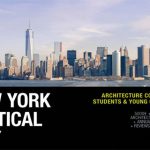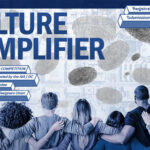Submission: October 05, 2015
Registration: October 05, 2015
Language: English
Location: London , England
Prizes: x4 Prize £1,000
Type: Open
The Royal Academy of Arts in London have launched a new international ideas competition which aims “to refocus attention to the huge potential of the brownfield sites that still exist across London.” ‘Brownfield’ sites, or those earmarked for potential building development that have had previous development on them, are plentiful in the UK capital. This competition seeks “speculative ideas [which] make the most of these missing pieces in London’s urban jigsaw.
We’re inviting architects to select their own site and devise a brief based on what they believe to be the best use of the site, informed by research into the needs and potential of the local area. These could be obvious practical needs, such as housing, a park or space for businesses, or could be more conceptual: in terms of bolstering civic identity through a community space, public art commission or new institution. We are looking for thoughtful and original ideas that should be grounded in reality but need not be constrained by budget or feasibility, instead, showing what could be achieved by innovative ideas and approaches.
Introduction
With land in London at a premium and thoughts consequently turning towards relaxing planning restrictions in the Green Belt, now is the time to refocus attention to the huge potential of the brownfield sites that still exist across the city. The Royal Academy of Arts Architecture Programme is launching an open call for speculative ideas to make the most of these missing pieces in London’s urban jigsaw. We are inviting architects to identify a particular brownfield site and propose an imaginative use that reflects the needs and potential of its surrounding areas.
The Brief
This year saw London finally surpass its pre-war population peak. The metropolitan area of Greater London is now home to 8.6 million people, with little sign of the growth slowing down over the next few decades. The population increase has led to pressure from a number of quarters for London to be allowed to expand into areas currently protected by the Green Belt, with thoughts also turning to how to densify the suburbs. Yet even after the ‘Urban Renaissance’ of the last thirty years, which revitalised the city centre – in part by redeveloping vast swathes of former industrial land – many brownfield sites still lie empty, unused and awaiting development.
In February 2015, the chancellor announced the creation of the London Land Commission, based at the GLA, whose mission is to identify ‘public sector brownfield land that is no longer needed in London, to help ensure that all of the capital’s brownfield sites are developed by 2025, and help meet its target of over 400,000 new homes by 2025’. According to Jonathan Seager, head of housing policy at London First, ‘it’s estimated that 40 per cent of brownfield land suitable for development in the country remains in public sector ownership’. For many the untapped potential of publicly-owned brownfield land is the answer to London’s housing crisis.
But such a blanket solution is far from straightforward, and largely overlooks the specifics of the size, location and surroundings of what is a patchwork of individual brownfield sites. It also ignores the obvious fact that if 40% of brownfield land is publicly owned, then the remaining 60% is in private ownership. Land-banking is a growing and much publicized trend, with developers often seeing better (and less risky) returns on land value increases than for actual development. Yet a big part of the problem is often the nature of brownfield sites themselves, which can be small or affected by practical or regulatory restrictions that make them difficult or risky to develop in conventional ways. Whatever the causes, the results of underdevelopment are usually the same, with brownfield sites becoming blights on an area, both visually and economically.
What we need therefore is a new approach to brownfield sites, one that is creative, imaginative and, vitally, driven by research into the economy, demographics and the urban fabric of surrounding areas. It is our contention that brownfield sites are very often the missing pieces of the urban jigsaw, whose thoughtful and strategic filling in and re-use can help bring places and communities together. This might be through a series of light-touch ‘tweaks’, or larger scale development to provide something that an area needs. More broadly, this initiative is intended to
make us look again at the potential of brownfield sites, and find alternatives to the often default option of high density – and high cost – housing which offers little to the surrounding area.
We invite you to select your own site and devise your own brief based on what you believe to be the best use of the site, informed by research into the needs and potential of the local area. These could be obvious practical needs, such as housing, a public park or space for businesses, or could be more conceptual: in terms of bolstering civic identity through a community space, public art commission or new institution. We are looking for thoughtful and original ideas that should be grounded in reality but need not be constrained by budget or feasibility, instead, showing what could be achieved by innovative ideas and approaches.
The Process
We seek proposals primarily from architects and architectural practices. We are keen to encourage collaboration between different disciplines, and a multidisciplinary approach will be looked upon favourably when selecting the proposals to move forward. We welcome submissions from students and those at an early stage in their careers, as well as established professionals.
Four teams will be selected as a result of this open call. Following notification, the RA will arrange meetings with each of the teams. In November and early Spring 2016, the teams will present their ideas to an expert panel who will offer feedback and guidance. These crits will also be open to the public. The four worked up proposals will be presented in an exhibition in the RA’s Architecture Space over May 2016. The exhibition will be accompanied by a programme of events which will give each team an opportunity to present their ideas in front of a public audience. The RA will also be arranging a briefing for developers, property professionals, local authorities and policy-makers, intended to engage them in the project and the ideas being put forward.
Honoraria
The four selected teams will each receive a fixed, one-off honorarium of £1,000.
Submission Details
Should you wish to take part in the Urban Jigsaw project, please send a PDF with the following information:
- • Maximum two-page outline of your idea, identifying your site and explaining your approach and methodology.
- • You are welcome to include photographs of your site, but images of your proposal should only be at sketch stage.
- • Short biographies of team members – please indicate the lead architecture practice if applicable.
• Examples of past work as deemed relevant.
Please send your submission to architecture@royalacademy.org.uk by 6pm on 5 October 2015 Questions.
Please address any questions to architecture@royalacademy.org.uk








